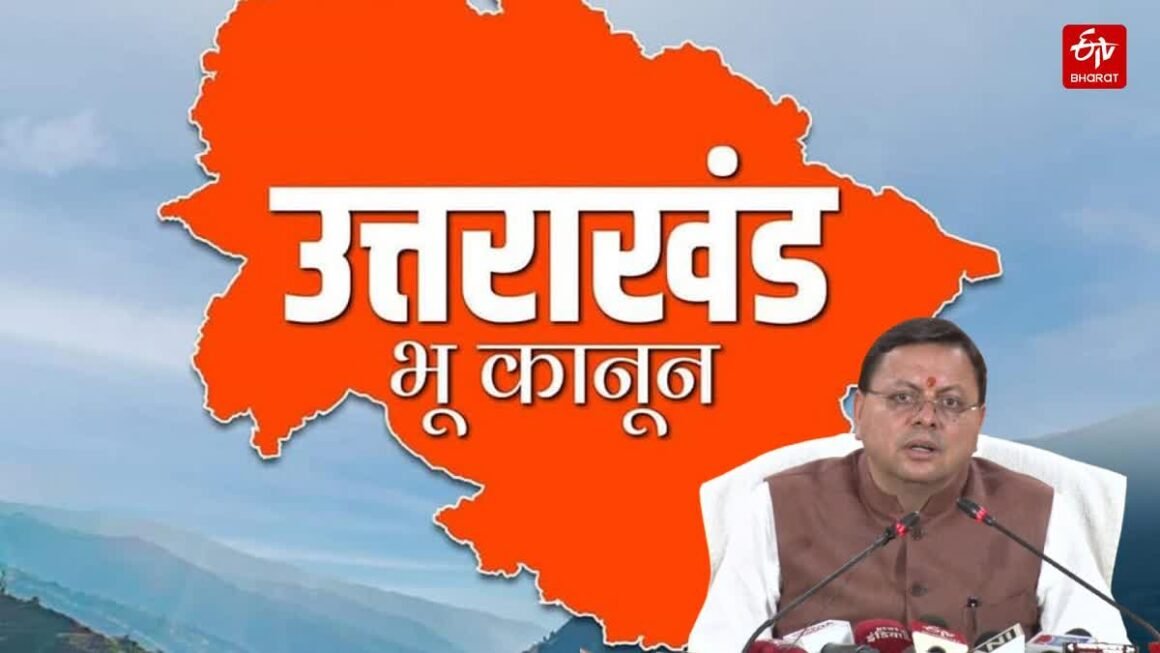
With over 1,200 ghost villages, Joshimath sinking in 2023, and two-thirds of Uttarakhand’s glaciers retreating, lawmakers and judges were forced to act — because land in the Himalayas is no longer real estate, it is survival.
A Himalayan Reality Check: When Ghost Villages, Sinking Towns, and Melting Glaciers Force the Truth
Over 1,200 villages in Uttarakhand now stand deserted, reduced to ghost towns after mass migration. In 2023, Joshimath split apart, leaving more than 800 houses cracked and 4,000 people displaced. Meanwhile, two-thirds of the state’s 2,500 glaciers are retreating, shrinking rivers and triggering floods. This is not just an economic crisis but a survival one. Outsiders buying land, inflated real estate, and reckless construction brought Uttarakhand to the brink. That is why in 2025, the Bhu Kanoon restricted land deals, and the Supreme Court warned that Himalayan states might “vanish from India’s map.”
Historical Lessons Ignored for Decades: How Past Debates and Other Himalayan States Paved the Way
Land laws in Uttarakhand are not a new debate. As far back as 2017–18, locals protested, demanding protections to prevent outsiders from swallowing their hills. Earlier, the state operated under the UP Zamindari Abolition and Land Reforms Act of 1950, but loopholes allowed large-scale sales. By contrast, states like Himachal Pradesh, Nagaland, and Sikkim had already put protective land restrictions in place. Uttarakhand was simply catching up after years of delay.
The Bhu Kanoon 2025: The Law That Caps Outsiders, Blocks Speculation, and Forces Accountability
The Bhu Kanoon 2025 is Uttarakhand’s most stringent land reform to date. It stops outsiders from turning villages into second homes and valleys into concrete jungles.
- Outsiders capped at 250 sq. m. land purchases.
- Agricultural land off-limits in hill districts.
- 3-year usage rule: unused land reverts.
- Affidavit verification mandatory for all deals.
- Limits on multiple purchases to stop hoarding.
- Partial exemptions in Haridwar and Udham Singh Nagar, but with state oversight.
This is not an anti-development law — it is a survival firewall.
Supreme Court’s August 2025 Orders: When India’s Highest Court Warned That Himalayan States May Vanish
The Supreme Court, led by Justice J.B. Pardiwala, issued a blunt verdict in August 2025 that resonates with Uttarakhand’s struggles.
- Fair Compensation for Farmers: Acquired land must be valued at true market potential, not outdated rates.
- Deadline for Encroachment Removal: All illegal forest and public land occupations must be cleared by February 2026.
- Ecological Collapse Warning: The Himalayas are in freefall — with a 300% rise in landslides in a decade, the Court warned that states like Himachal and Uttarakhand could “vanish from India’s map.”
This was not metaphorical. It was data-backed reality: shrinking forests, retreating glaciers, and collapsing slopes.
Politics and Power: Why Dhami Defended the Law While Investors Cried ‘Anti-Growth’
Chief Minister Pushkar Singh Dhami presented the law as a cultural shield for Devbhoomi. His supporters argued that without it, Uttarakhand would become a holiday colony for outsiders, leaving locals landless. Opposition leaders supported the intent but warned that corruption in land registries could dilute enforcement.
Locals, however, were clear: protect our land first, worry about profits later. Developers and investor groups claimed the law would hurt growth and tourism. The real debate, then, was not just about land but about preservation versus profit.
Case Studies of Collapse: From Joshimath’s Cracks to Ghost Villages and Illegal Resort Empires
- Joshimath Disaster (2023): Over 800 homes damaged, 4,000 residents displaced — a symbol of reckless construction.
- Ghost Villages: More than 1,200 deserted villages across hill districts, with 118,000 people migrating between 2001–2011 alone.
- Encroachment and Resorts: Illegal resorts in Corbett and Doon Valley showed how land mafias profit from weak laws.
Each of these tragedies became a lesson in what happens when land is left to greed.
Different Impacts on Different Districts: Why Hill Zones Face Stricter Controls Than the Plains
The Bhu Kanoon 2025 is not uniform; its impact varies by region.
- Hill Districts (Chamoli, Rudraprayag, Tehri, Pithoragarh): Strict bans on outsider agricultural purchases.
- Tourist Hubs (Mussoorie, Nainital): Real estate speculation curbed; inflated prices may finally ease.
- Plains (Haridwar, Udham Singh Nagar): Limited relaxations allowed for industry and urban growth, but only with state scrutiny.
This tailored approach balances economic opportunity with ecological protection.
The Road Ahead: Can a Law and a Court Order Reverse Decades of Damage?
The new law and the Court’s orders are only the first steps. What comes next will decide Uttarakhand’s future.
- Economy: Real estate will slow, but homestays, eco-tourism, and local agriculture could grow.
- Ecology: Landslides and illegal construction may reduce — if enforcement is strict.
- Society: Migration could slow, but real revival requires jobs, education, and healthcare in the hills.
- India’s Precedent: Other states — Himachal, Meghalaya, Sikkim — may adopt similar safeguards.
This is a turning point. Either Devbhoomi survives, or it becomes another cautionary tale of profit over preservation.
Public Sentiment: Locals Applaud the Law, Investors Fear Their Profits Shrinking
Villagers see the Bhu Kanoon as justice long denied. For them, it protects their homes, culture, and future generations. Investors and real estate lobbies, however, argue that restrictions will drive away capital and slow tourism. But in the public eye, after Joshimath and recurring floods, profit arguments are losing ground to survival arguments.
The Last Word: When the Himalayas Collapse, They Take More Than Mountains With Them
The Uttarakhand Bhu Kanoon 2025 and the Supreme Court’s August 2025 orders are not just legal documents — they are survival manuals. With ghost villages multiplying, glaciers melting, and towns literally sinking, land in the Himalayas is no longer about wealth. It is about whether an entire culture and ecology can endure.
If enforced properly, these measures may restore balance. If ignored, India risks losing not just soil and stone, but the very soul of Devbhoomi.
FOR MORE BLOGS – beyondthepunchlines.com

 Add to favorites
Add to favorites








